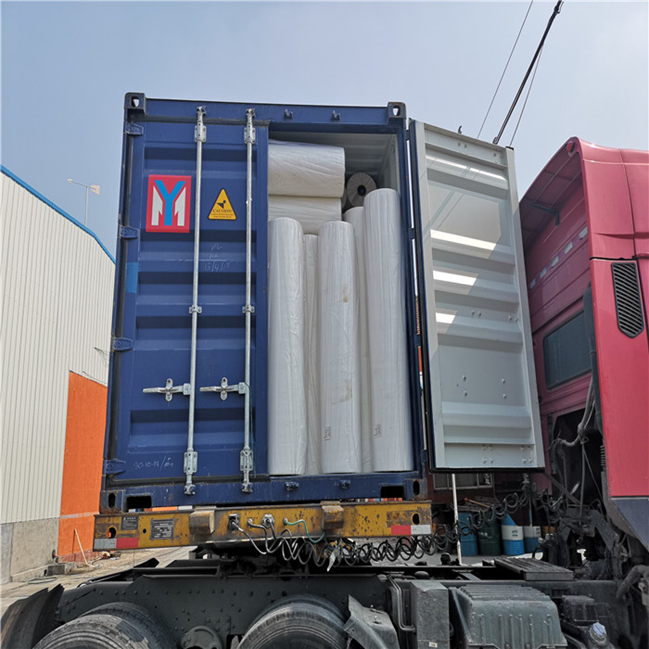News information
News information
Loading the container of absorbent rolls for US customer
Source:Jiangyin Henghe Nonwovens Co., Ltd Release time:2023-03-15 14:00:00 Visitor:1638


Absorbent rolls are used to handle oil spills and liquid leaks and are typically sold in roll form. Loading absorbent rolls into a container is a crucial operation to ensure they remain intact during transportation for easy use when needed. Here's a description of the process for loading absorbent rolls into a container:
-
Preparation: Before starting to load absorbent rolls, ensure that the interior of the container is dry and clean to prevent contamination of the rolls. Check the dimensions and space within the container to ensure there's enough room to accommodate the desired quantity of absorbent rolls.
-
Protective Measures: To safeguard the absorbent rolls from moisture, dust, and physical damage, you can place moisture-resistant pads, plastic sheets, or cardboard at the bottom of the container. These protective measures help maintain the quality of the absorbent rolls during loading and transportation.
-
Arranging Absorbent Rolls: Lay the absorbent rolls flat inside the container, making sure there are no significant gaps between them and maximizing the available space. Depending on the size of the absorbent rolls and the shape of the container, you might consider arranging them horizontally or vertically.
-
Layering: If you need to load multiple layers of absorbent rolls, you can stack the second layer on top of the first. Place isolation material between different layers to prevent excessive pressure on the lower rolls. This helps avoid flattening or damaging the rolls.
-
Stability and Padding: Ensure that the absorbent rolls remain stable inside the container after loading to prevent movement or shifting during transportation. Fill around the rolls with appropriate padding, if necessary, to keep them in place.
-
Inspection and Sealing: After loading is complete, carefully inspect the arrangement and layout of the absorbent rolls. Ensure that the rolls haven't sustained any damage and that the layout within the container is stable and secure. Use seals or ropes, if required, to secure and seal the container.
-
Recording and Labeling: Mark the container with information about the included absorbent rolls, such as quantity, weight, and the type of absorbent rolls used. This helps in tracking and identifying the absorbent rolls for processing and use at the destination.
Loading absorbent rolls into a container requires careful planning and execution to maintain their effectiveness and quality during transportation. Depending on the container's dimensions and requirements, appropriate steps and measures might be needed to optimize the loading of absorbent rolls to the fullest extent.
www.henghenonwoven.com

